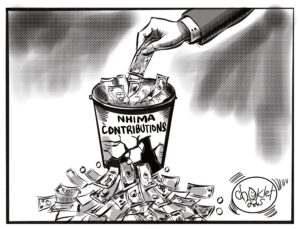Copperbelt Energy Corporation (CEC) says Konkola Copper Mines (KCM) should come up with a solution for liquidating its debt because it can drown the power utility’s business.
Last week, KCM obtained an interim injunction blocking a power restriction order from CEC, which it owes about US$132 million in overdue invoices.
In an interview, CEC chief executive officer Owen Silavwe said by this month end, the debt could easily rise to about US$144 million.
“Basically, we have tried to work with both KCM and government to try and find a solution to this matter and that’s something that we continue to do. So it’s not like we take pleasure in restricting power and all that. Unfortunately, things are not getting resolved, that really is the last resort because we do need to protect the business. So there is obviously the court process but we are hopeful that before that, KCM can come forth with an acceptable solution to resolving that debt because this will continue to grow, if we get to month end, this thing will easily get to US$144 million. So you can see that it grows very quickly and it’s something that is not healthy for the CEC business, it can end up drowning us as a business and as you know CEC is limited,” Silavwe said.
“If you get a court injunction, it obviously restrains you from undertaking the restriction because remember, this is not cutting power, this is restricting because with the mines, you always have to supply the minimum required to maintain safety of both the equipment and the personnel. And also, you have to remember that this injunction is an interim injunction so the court just hears one side of the story and they provide that interim protection. So there is a hearing that has been set for the 26th of May so it means that before that, everybody has to perform their obligations, which for us is supplying power, we are hoping that they can also come forth.”
He said the US$46 million debt swap that was done in December was different from the amount CEC was currently demanding.
“If you look at the court affidavit, they are saying that they owe us US$46 million. Now, I know people are trying to confuse between the US$46 million debt swap that was done around November/December, that’s a totally different arrangement. Because even at that time, the money that they were owing was a lot more but there was a debt swap that was done that time, but even that debt swap was being engineered by CEC in our continued efforts to try and find a solution to this,” Silavwe said.
And Silavwe said CEC had a lot of obligations, hence the need to collect debt in order to stay alive.
“And remember, the company has a lot of pensioners who have invested in it as well as pension schemes, all those people need to be protected, they have put money in this thing so we can’t allow the company to be drowned by continuously expanding debt and that’s why we had to take the relevant actions to make sure that we could protect not just the business but the investors and all the stakeholders that have invested in CEC including our customers because if we get to a point where we are unable to provide service to our customers because we are drowning in debt, then everybody else will be suing us. We have got some court cases going on just around the KCM date because we haven’t been able to pass on money or meet some of our obligations because of KCM owing us so we really need to make sure that we do what is right and protect both the customers and the investors,” said Silavwe.
























